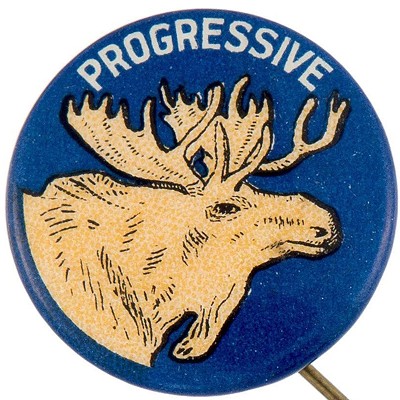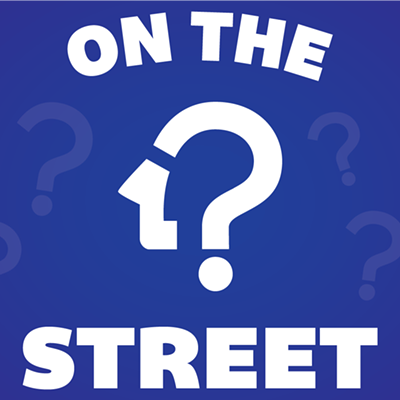by Kevin Taylor & r & If dispensing justice is indeed a great balancing act, nobody feels it more keenly than the justices of the Idaho Supreme Court. And as the newbie who draws the end spot on often makeshift seating arrangements, Jim Jones feels the importance of this balancing act more acutely than his four fellow justices.
The Idaho Supreme Court, which is spending this week in the two judicial districts of North Idaho, may be one of the last in the nation to continue the archaic tradition of "circuit riding." At least once a year, the Idaho Supreme Court travels to different courtrooms around Idaho. Early this week, it took over District Court Judge John Luster's courtroom No. 1 on the top floor of the old wing of the Kootenai County Courthouse in Coeur d'Alene. The high-ceilinged, wood-paneled throwback with the creaky swinging doors is the only courthouse in Coeur d'Alene even remotely big enough to squeeze five judges behind the imposing raised bench.
"I'd heard all the horror stories about people falling off the side," Jones, appointed in January, says while awaiting breakfast Tuesday morning in Coeur d'Alene.
He had taken the precaution of skooching in as far as he could when arguments began at 8:50 am on Monday. Jones noted with silent horror that the amount of bench room under his black robes steadily dwindled as Monday progressed. Despite the inexorable approach of calamity, he kept an even keel and studious demeanor. After all, a state Supreme Court Justice can't just haul off and hip-check his neighbor to get a little more room -- that'd be a dead giveaway to the momentous question, "Which way is the court leaning?"
And is it significant, especially in hard-rock conservative Idaho, that Jones' colleagues were pushing him to the left?
"It's a matter of perspective," Justice Dan Eismann explains at the breakfast table in his most Solomonic voice. "It may appear from the gallery that we are pushing Justice Jones to the left, but from our side of the bench we are pushing him to the right."
"I can't imagine Justice Eismann pushing anyone to the left," Jones says.
Jones made it through the day without making an undignified, robe-flapping tumble to the carpet in front of the witness stand. Not so lucky, he says, "was my injured compatriot Justice Burdick."
Supreme Court Justice Roger Burdick packed his bicycle along for this week's road trip, and was out getting a little exercise Monday evening in Coeur d'Alene when he was run over by a car making a hurried right turn.
Burdick injured his left leg, his good one, and spent Tuesday in the motel.
"He has previously injured his right leg and hip, and we weren't going to even try to hoist him up to the bench," Eismann says.
So, was there a lawyer behind the wheel? Jones laughs. "This is why we don't issue our opinions until later. It gives us a chance to get out of town."
The court -- at least once a year and often twice if the state budget allows -- gets out of the capital, Boise, to hear cases in Coeur d'Alene, Moscow, Lewiston, Pocatello and Idaho Falls.
"I think it's important for people to see public officials out in the hinterlands," says Jones, who twice was elected Idaho Attorney General in statewide campaigns.
The tradition, says Justice Linda Copple Trout, goes back to when southern Idaho wrested the state capital away from Lewiston.
"I'm guessing there was some quid pro quo from when we moved the state capital to Boise," Trout says. "Something like 'OK, you can go, but we want the court back once in awhile.'"
An annual state Supreme Court trip to Lewiston is, in fact, specified in the state constitution.
Over the years, the justices added trips to other key cities that cut off from Boise by rivers and mountain ranges.
"It's important for us to travel. We get lots of students," Trout says. "We rarely get students in Boise. It's a great opportunity to see the court in action."
And for the justices, it's a great way to stay connected with the rest of Idaho, typically in their own cars.
Even in a state run by fiscal tightwads, you can't expect the Supreme Court justices to pack into a state-owned van like some college volleyball team. The justices recite a laundry list of why that's a bad idea -- not least among which is Chief Justice Gerald Schroeder's car-sickness.
So most of the justices drive in their own rigs -- everything from Copple Trout's Porsche to Jones' 11-year-old Acura that rolled past 130,000 miles on the way north.
Oh, there is a van. It's white and unmarked. (Nobody in their right mind would want to drive around in a van advertising "The Supreme Court of Idaho," Schroeder says.) It's driven by Steve Kenyon, the cell-phone juggling, bow-tie wearing clerk of the court. Kenyon hauls the justices around town for short trips in the van and also hauls the gear: timers, computers, boxes of case files, robes.
On Monday, as the justices were "suiting up," the robes given to Eismann had sleeves ending just below his elbows.
"They were three-quarter length. I couldn't remember if those were still in style," Eismann says.
Down in Boise, it turns out, the frugal court keeps a closet stuffed with robes, even the ones once worn by long-retired justices.
"It's state property, you can't take them with you when you go," Eismann says.
"I plan on having mine bronzed," Jones quips.
Eismann borrowed robes from local Magistrate Barry Watson as the mortified Kenyon made a "note to self."
The inconveniences -- travel on Idaho's twisting highways, falling off benches or winding up with the wrong robes -- reminds the justices of when they were just normal folk, and not "august personages."
All five have been attorneys, magistrates and district court judges, and their days of kicking around loosely guarded courthouses were wistfully related.
"You had a lot more contact with people. I miss that," Eismann says. "I also miss presiding over a drug court, where you see people's lives change for the better. That's unusual for a judge, where typically the people you see more than once are the ones who are failing."
As Supreme Court justices, their tasks have more to do with the almost esoteric chore of bringing consistency to the law.
"We can't look across the landscape and search out areas that need better definition," Eismann says. "We have to wait for the cases to come to us."
In the meantime, they keep bringing themselves to the people.
And at the end of every case, they keep alive a tradition -- one whose origins are lost. The five justices rise, file out from behind the bench and circle through the court, shaking hands. It's not in the state constitution, but it's a nice touch.
Robe Trip
[
{
"name": "Broadstreet - Instory",
"component": "25846487",
"insertPoint": "4",
"requiredCountToDisplay": "4"
},{
"name": "Broadstreet - Empower Local",
"component": "27852456",
"insertPoint": "8",
"requiredCountToDisplay": "8"
},{
"name": "Broadstreet - Instory",
"component": "25846487",
"insertPoint": "12",
"requiredCountToDisplay": "12"
},{
"name": "Broadstreet - Instory - 728x90 / 970x250",
"component": "27852677",
"insertPoint": "18",
"requiredCountToDisplay": "18"
},{
"name": "Broadstreet - Instory",
"component": "25846487",
"insertPoint": "5th",
"startingPoint": "23",
"requiredCountToDisplay": "24",
"maxInsertions": 100
}
]















